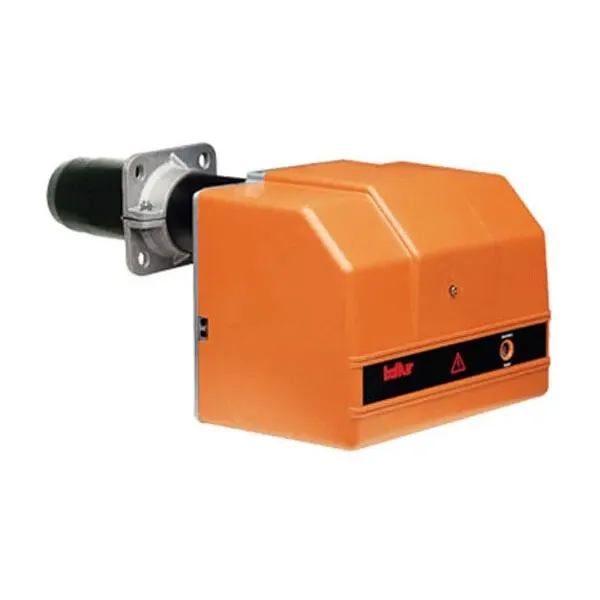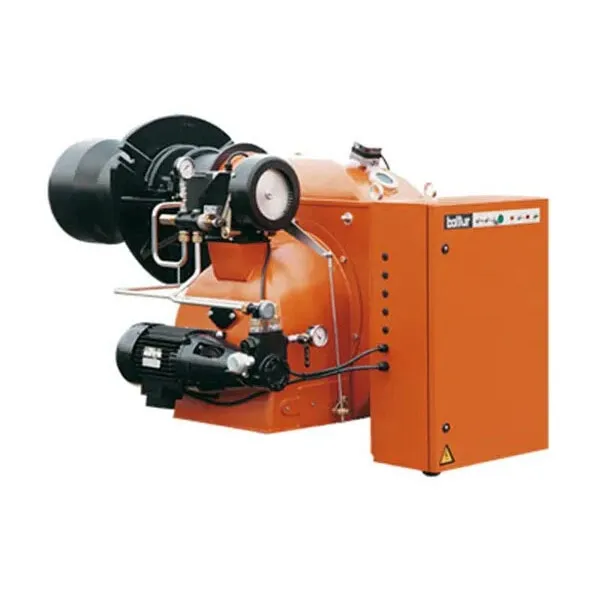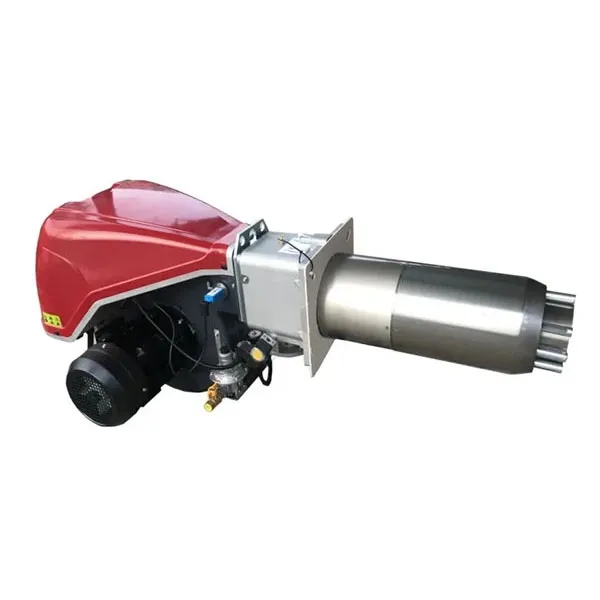In industrial production, high-temperature furnaces are essential core equipment in numerous industries, such as metallurgy, ceramics, glass, and chemicals. Industrial gas burners, the heart of these furnaces, directly impact furnace temperature uniformity, fuel consumption, product quality, and even production safety. Faced with a wide variety of industrial gas burners on the market, how can you choose the most suitable model for your business and ensure efficient and stable operation of your high-temperature furnace?
This article will delve into the key factors in selecting industrial gas burners for high-temperature furnaces, aiming to provide you with a comprehensive guide.

The core purpose of any high-temperature industrial furnace is to convert the chemical energy of the fuel into uniform, controllable heat within the workspace.
Energy Conversion: The burner is the execution terminal of this process. It mixes the fuel (natural gas, diesel, hydrogen, etc.) and combustion air (oxygen) in a precise ratio and safely and stably ignites the mixture through an ignition device, completing the conversion of chemical energy into thermal energy.
Energy Injection: The converted high-temperature flue gas is directly injected or directed into the furnace, serving as a heat source to heat the workpiece. Without a burner, the furnace is merely a cold, empty cavity, unable to generate the high temperatures required for the process.
The performance of a high-temperature furnace is largely determined by the performance of its burner.
Temperature Level: Different combustion technologies (such as diffusion combustion, premixed combustion, and high-temperature air combustion) determine the maximum achievable flame temperature and furnace temperature. Without efficient burners, it's impossible to achieve the high temperatures (typically above 1200°C) required for processes like steel melting, glass melting, and ceramic sintering.
Temperature uniformity: The uniformity of the furnace temperature directly impacts consistent product quality. Advanced burners ensure uniform heat distribution within the furnace through precise flame shape control (e.g., flat, long, or short), multi-stage combustion, and coordinated furnace design, preventing localized overburning or underheating of the workpiece.
Heating efficiency: The burner design determines whether the fuel is burned completely and efficiently. An efficient burner achieves extremely high fuel utilization, converting as much chemical energy as possible into effective heat, rather than wasting it as incomplete combustion products (e.g., CO) or excess flue gas, which directly impacts operating costs.
Atmosphere control: In many precision processes (such as metal heat treatment and material sintering), the furnace atmosphere (oxidizing, reducing, or neutral) is crucial. Burners precisely control the air-fuel ratio (the ratio of air to fuel) to create and maintain the desired atmosphere, preventing oxidation or decarburization of the workpiece during heating.
Modern industrial furnaces are highly automated, and burners are key execution and feedback units.
Precise Control: Burners are connected to advanced control systems (such as PLCs) to precisely adjust the firing rate (load regulation) according to the process curve, achieving rapid heating and precise temperature maintenance, meeting complex thermal system requirements.
Safety: Burners incorporate multiple safety features, such as:
Automatic Ignition and Flame Monitoring: Ensures successful ignition and immediately cuts off the fuel supply if the flame fails, preventing explosions.
Pre-/Post-Purge: Air is purged from the furnace during startup and shutdown to remove residual combustible gases.
Gas High and Low Pressure Protection, Air Pressure Monitoring, etc.
Without these safety features, a high-temperature furnace would be an extremely dangerous piece of equipment.
With increasingly stringent environmental requirements, the role of burners is becoming increasingly important.
Pollutant Emission Control: The combustion process is the primary source of pollutants such as nitrogen oxides (NOx) and carbon monoxide (CO). Advanced technologies such as low-NOx burners can significantly reduce NOx generation at the source through flue gas recirculation and staged combustion, helping factories meet environmental regulations.
Operating Cost: As mentioned earlier, combustion efficiency directly determines fuel consumption, which is the primary operating cost of a high-temperature furnace. An efficient and well-maintained burner can significantly save energy costs.
Therefore, an industrial burner is more than just a simple ignition device; it is the heart and soul of a high-temperature industrial furnace, integrating energy conversion, process control, safety assurance, and environmental compliance. Its performance directly determines the advancement, reliability, cost-effectiveness, and environmental performance of the entire thermal equipment. Therefore, when selecting a burner, it is crucial to consider the following:

Before selecting a burner, you must first have a clear understanding of your own high-temperature furnace process. 1.1. Target Temperature and Temperature Uniformity: What is the maximum temperature your furnace needs to reach? How high is the temperature uniformity requirement within the furnace? Different burner designs have different flame lengths, shapes, and radiation characteristics, which directly affect the temperature distribution within the furnace. For example, some processes may require a longer diffusion flame to cover a larger area, while others may require a more concentrated, short flame for rapid, localized heating.
1.2. Furnace Atmosphere Requirements: Does your process require an oxidizing, reducing, or neutral atmosphere? Certain specialized processes, such as sintering in powder metallurgy or glass melting, require critical control of the furnace atmosphere. Burner design (such as air/gas mixing, premixed or stratified combustion) directly affects the oxygen content and combustion products in the flue gas, and thus the furnace atmosphere.
1.3. Fuel Type: What fuel gas do you primarily use? Natural gas, liquefied petroleum gas (LPG), coke oven gas, or other industrial by-product gases? Different fuel gases vary significantly in calorific value, density, and combustion characteristics, and the burner design must be adapted to ensure safe and efficient combustion. 2. Evaluate the Burner's Key Performance Indicators
2.1. Rated Power and Turndown Ratio: The burner's rated power should match your furnace volume and heat load requirements. Turndown ratio (the ratio of maximum power to minimum power) is a key indicator of burner flexibility. Burners with high turndown ratios can better adapt to changes in heat load during production, achieving precise temperature control and energy savings.
2.2. Flame Characteristics (Length, Shape, and Stability): The flame is the burner's signature. Consider whether the flame length effectively covers the heating area, whether the flame shape (e.g., flat flame, long cone) is compatible with the furnace structure, and the flame's stability under varying operating conditions. An unstable flame can lead to incomplete combustion, pulsation, and compromise furnace temperature control.
2.3. Fuel Consumption and Thermal Efficiency: This is key to cost control. Selecting energy-efficient burners can significantly reduce operating costs. This typically involves the burner's air preheating capability, combustion technology (e.g., oxyfuel combustion, staged combustion), and integration with a heat recovery system.
2.4. Pollutant Emissions: With increasingly stringent environmental regulations, emissions of pollutants such as NOx and CO have become a significant concern. Low-NOx burners (such as staged combustion and premixed surface combustion burners) are the future trend and will help companies meet environmental standards.
2.5. Material and Durability: The harsh environment inside a high-temperature furnace places extremely high demands on the material quality of the burner. Select materials with excellent high-temperature resistance, corrosion resistance, and thermal shock resistance to ensure burner reliability and longevity during long-term operation.
In addition to performance, burner installation, maintenance ease, and compatibility with existing automation systems are equally important.
3.1. Mounting Method and Space: Is the burner's mounting method (e.g., sidewall mounting, ceiling mounting) and required installation space compatible with your furnace structure?
3.2. Maintenance Ease: Is the burner easy to inspect, clean, and replace components? Good maintainability reduces downtime and improves production efficiency.
3.3. Automation and Control System Integration: Modern industrial furnaces are typically equipped with advanced automation control systems. The selected burner should seamlessly integrate with existing PLC or DCS systems to implement functions such as automatic ignition, flame monitoring, temperature control, and safety interlocks.

Choosing a reliable supplier is like choosing a trustworthy partner.
4.1. Brand Reputation and Industry Experience: Select a supplier with a good reputation and extensive experience in the industrial gas burner market; they typically have more mature technology and more reliable products.
4.2. Technical Support and Customization Capabilities: Can the supplier provide professional technical consultation and offer customized solutions tailored to your specific needs?
4.3. After-Sales Service: Comprehensive after-sales service (including installation guidance, commissioning, training, and spare parts supply) is crucial for ensuring the long-term, stable operation of the equipment.
Selecting the appropriate industrial gas burner for a high-temperature furnace is a systematic process that requires comprehensive consideration of multiple factors, including process requirements, burner performance, installation and maintenance, and the supplier's capabilities. Investing time and effort in thorough research and evaluation will not only ensure efficient and stable production processes, but also significantly save your company significant energy and maintenance costs, maintaining an advantage in a competitive market.
We hope this article provides a helpful reference for selecting industrial gas burners. If you have more specific project requirements, please contact us. As a professional industrial burner manufacturer with a dedicated technical team, Shuxin is dedicated to providing customized solutions.
Industrial Burner Troubleshooting Guide: Fix Common Problems & Boost Performance
2025-11-24How Industrial Gas Burners Boost Efficiency in Metal Processing: 5 Key Applications
2025-11-19Why Low-NOx Industrial Burners Are Essential for Efficient, Safe, and Sustainable Manufacturing
2025-11-15Industrial Burner Selection Guide: Improve Production Quality and Safety
2025-11-09Address: Room 504, Building 11, Wuzhou International Industrial Expo City, Old National Highway 310, Xigong District, Luoyang City, Henan Province
E-mail: shuxin@sxburner.com
Phone: +86 15516359168
Take every customer request seriously.

Shuxin
Electromechanical
+86 15516359168
shuxin@sxburner.com
Room 504, Building 11, Wuzhou International Industrial Expo City, Old National Highway 310, Xigong District, Luoyang City, Henan Province
+86 15516359168
shuxin@sxburner.com
Room 504, Building 11, Wuzhou International Industrial Expo City, Old National Highway 310, Xigong District, Luoyang City, Henan Province